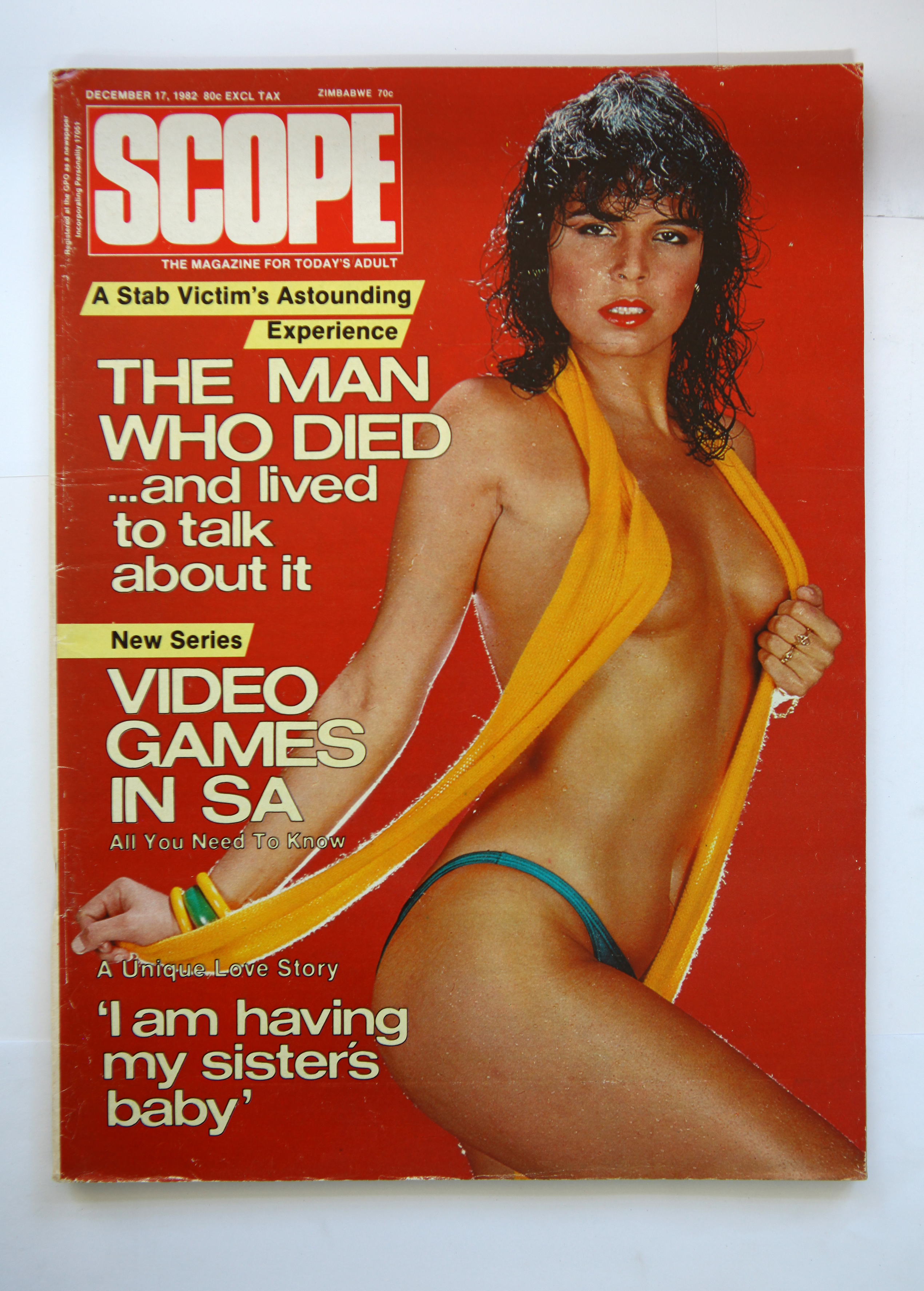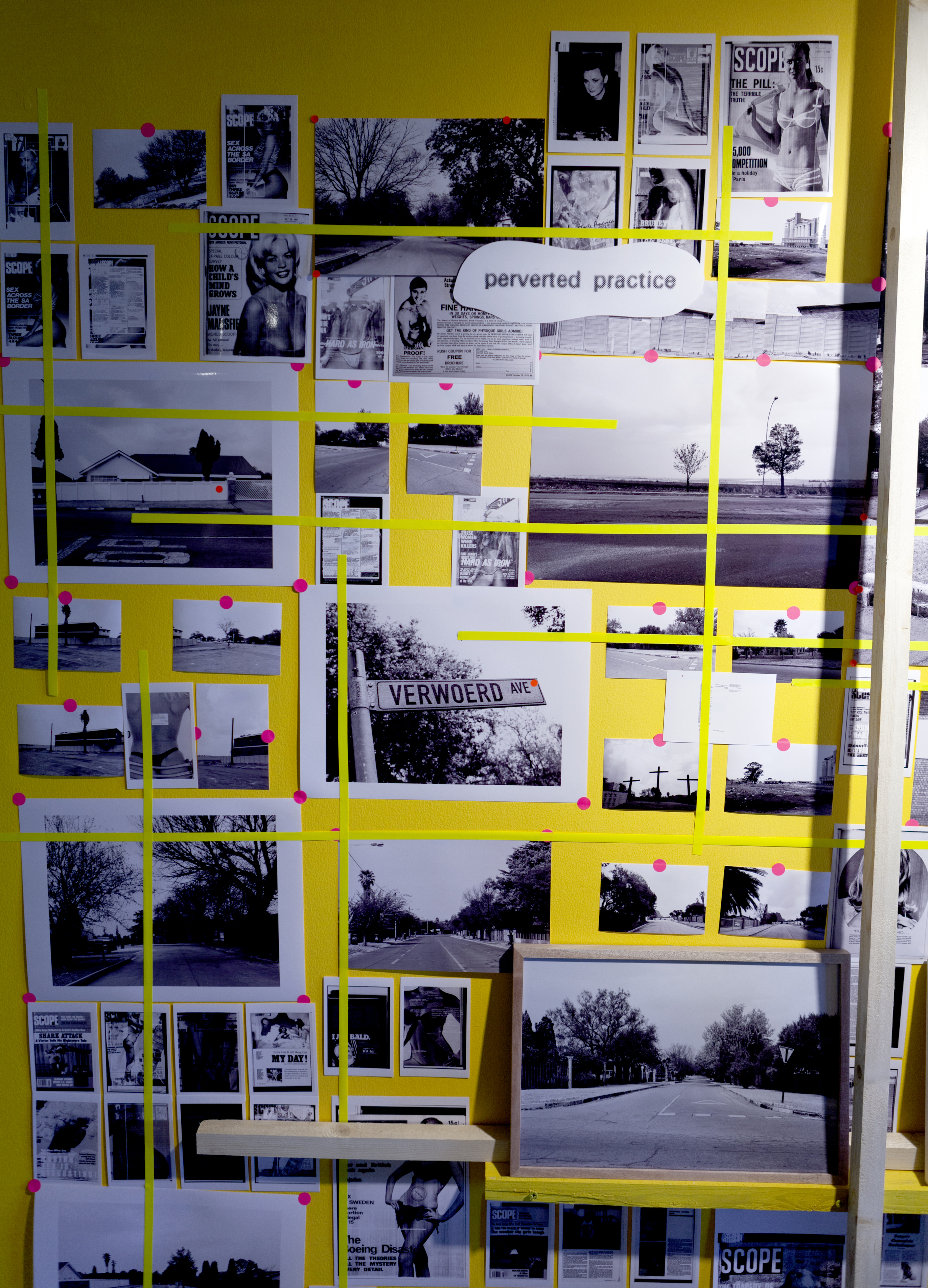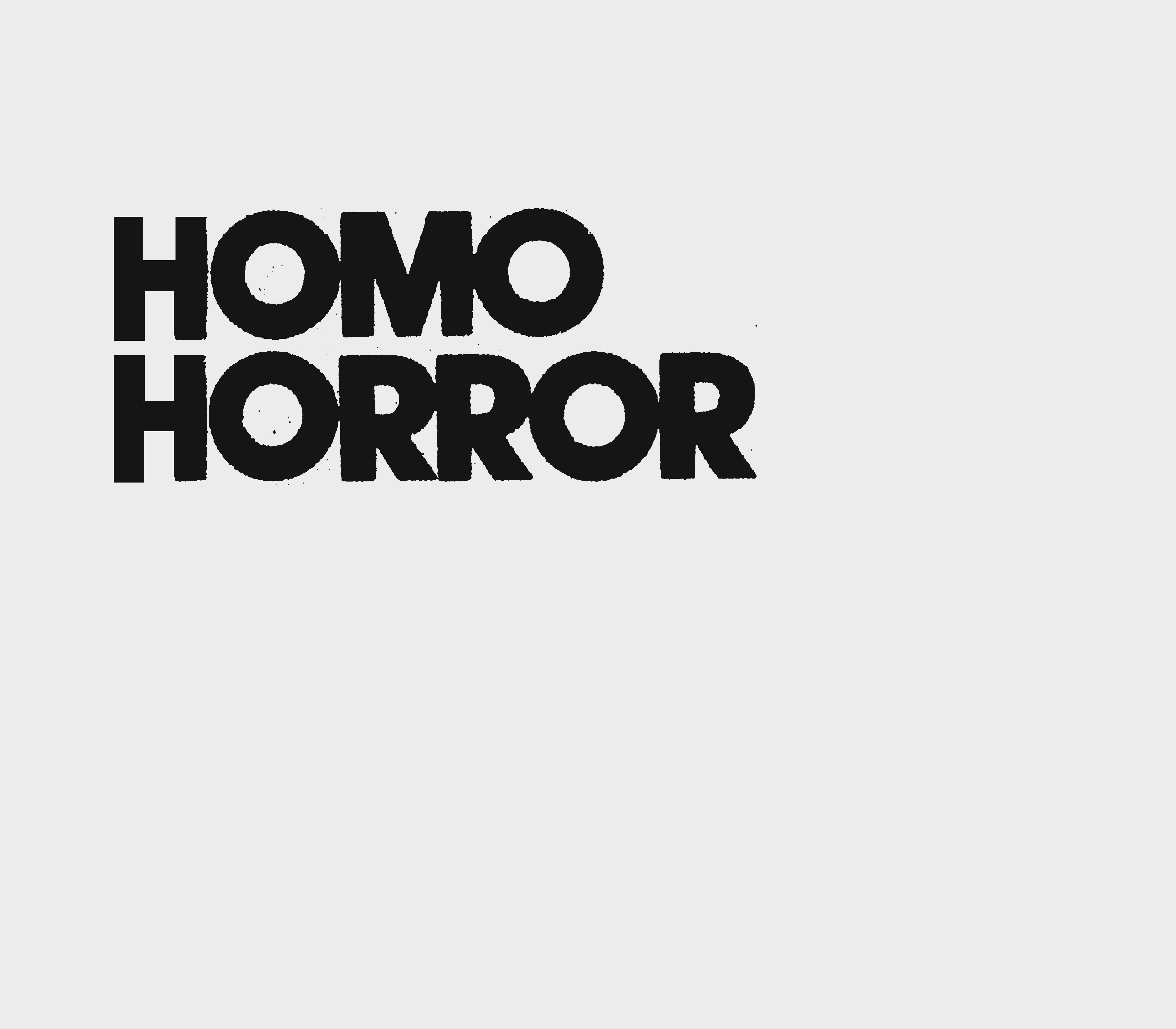An archive collected and carefully preserved for 10 years. Scope magazine. The tropes of the glamour model. Boobs, it’s all about the boobs. The pose drives it. Objectifying ‘her’ makes you a “man”. Printed in high gloss and colour coordinated- red, yellow and shiny. As you enter the first room and take a spatial inventory you see her, Lauren Shipton, a transgender womxn printed on what appears to be a thin cotton sheet. Her image suspended from a photographic studio stand drapes in the shape of a shower curtain. Intimacy steps forward. Queerness in apartheid. BORN A CRIMINAL. Queer in the army. It deepens.
I NDEX:XY breaks the binary in more ways than one. Not your typical exhibition, Roelof Petrus van Wyk uses the display as a mapping exercise extending upon his findings towards the completion of a PhD in History of Art at WITS. Visually his exhibition is a map of archival material that has been coded and does not contain “artworks”. Research and archival material are skinned layer for layer and categorized with a colouring/coding system and so the mapping process begins.
What becomes peculiar when investigating each of the 400 copies is that the construct of the white female glamour model on the cover is hardly ever broken, she follows the same aesthetic lines. And then the exceptions come in, Tina Turner, Boy George, Lauren Shipton and finally F.W. Verwoerd. Why is that?
Rooted in phenomenology the pictorial display transfused with textural inserts make use of a milieu that is more than known to the author, he has lived it. Van Wyk’s exploration is a visual display of a personal nature and investigates sexuality. Much more than this the visual methodology and coding practice maps how whiteness and all its various constructs work via Scope magazine, border war images and images of where he grew up in black and white, which he explains as a spatial experience. Devoid of humans, his black and white depictions intend to allow the viewer to read themselves into the images, into the small white town of Krinroos, Mpumalanga. But the body of work becomes skewed as the researcher sticks up images taken in other white suburbs and it is then that the realization seeps in that they merge and become one space, one suburb. A space of hegemonic whiteness, heteronormativity and where ‘othering’ is bred. The most banal images of the show, they are a memory map as well as a spatial remapping. The readers of Scope, they are found within this space/orientation. By doing so, Van Wyk brings space into discussion in his archive.

As a gay man growing up in the heart of apartheid, Van Wyk overperformed hetero’normativity’ in order to survive the grueling heterosexual society that was the neutral. Excelling in each way possible such as sports (associated with masculinity) he made his mask full circle by learning the language that the heterosexual male uses to objectify and capitalize from the femme body through Scope magazine. And so Scope protected him, this generic ‘her’ had become his warrior angel protecting him.
In preparation for this piece Van Wyk took me on an intimate walkabout of the show with fellow PhD scholar Candice Jansen. The below is an altered transcript of our conversation (made shorter). This acts as a textual exploration of the show itself:
My work is phenomenological it means it’s my experience: how did I grow up, what was my experience in it and how can you as a white male, fortunately a homo, how can I read it but how can I read it through my sort of alternative homosexuality. What is the constructs that you can create and sort of the models and kind of mappings that gives you another way of looking at apartheid that intersects and overlaps with race, that’s really important because, such a dominant way of looking at apartheid is the Immorality Act that prohibited any relationship across what they called the races. And that I think is the key legislators, yes there is the Land Act and a whole lot of other stuff but in terms of the body and in terms of sexuality and gender and then race and how all of those intersect, it sits in that act, it’s the key.
The Homosexuality Bill sits inside the Immorality Act it comes from the Dutch-Roman law. There is a genealogical descent of what happens here, racially, sexually. It comes from the Dutch and they brought all that in in various forms until it gets here and it’s March ’69 in parliament that the Homosexual Bill gets ratified and I was born that month.

Taking these acts into consideration would you then say it’s making spaces heterosexual if you look at the queering of objects, making objects straight and spaces straight?
The very simple thing is the hegemonic powers needed to define homosexuality, they needed to ‘other’ it, they needed to action it in order to define its own heterosexual hegemonic masculinity, its own sexuality, its own purity, its own patriarchy. In order to give it form and shape. It’s the normal, it’s the neutral. They needed to define everything else that’s not that so, gender, female and male, that is their role in this particular mapping.
In ’66 there was a party in Forest Town and the cops heard of this party so they raided this party. They found 300 men frolicking, some in womens dresses, some kissing each other, some not wearing a lot of clothing. And they were so outraged they then made this private event at a private house into such a big legal story, or such, a ‘thing’ around moral permissions. They took that all the way to parliament and that’s how we got to the Homosexual Bill. So, the security forces, the political forces, the legal forces all were working together wanting to show the ‘bad fags’ and show that they are the good guys.
The moment I talk about Forest Town and that house, queer space, which is then forced to become exemplary queer space but as an abject space. And you look then at all these bodies that are not your normal, what is termed as normal, even the girl on the cover is an abject, she is too beautiful, too luscious, her boobs are too big. I use that, those are the terminologies.
Where Scope was anti National government it was pro hegemonic masculinity and definitely pro pure heterosexual productivity, and that’s what I’m investigating. But how that then as a force which shaped apartheid legislation, over all of this language, the discourse of sexuality.
I think it’s interesting because people think it’s a porno, but it isn’t, they think of it as a porno because it was made out by the forces that be as an amoral magazine but it was only after ’92 that you actually saw any nakedness, before all that it would be censored.
It is the only magazine at that size even, 200 000 copies a week, 800 000 a month and it was like 2 and a half million people, not only white people white men read it, fags read it, women read it, and black people read it. The performative is so key in thinking about apartheid. Performing your gender- Judith Butler, I think Scope is such a great example of it because everything is about how to perform as a “man”.

The magazine is about him (the reader) this magazine is his fantasy. I think it’s always about the reader and about him shifting or not opening or confirming and by that defining these normalities, normativity by the magazine’s abject otherness.
I learnt that I was a homosexual through Scope magazine. The whole phantasmagoric experience of Scope, I realized I don’t want to shoot a gun, I don’t want to go to the army, I am different.
Scope’s discourse was around the body and the sexualized body. There is an image of Tina Turner as we go around the corner, at the end of ’85 and the text, for the first time is something that describes her in a desirable, sexual way because in June of that year, the mixed marriages act, which was part of that act, the Morality Act was scrapped. For the first time you could actually desire a black woman publically.
[Candice]: But what is the exotic within a context like this, because what do you consider the exotic in some ways to be?
When you put the abject and the exotic together they are not opposites, they are the same thing pushed in different directions. Because the guy who looks at the cover and goes ‘Fuck she’s hot’ goes in and pages to pg. 36 and its her and you realize she was born a man. What do you think goes on in his head? So that line between desire and disgust suddenly collapses. It becomes the same thing and something is in his head, it could be rage, it could be shame it could be a realization.

I think for me with cases such as this, is I often times notice that a man such as this, the white heterosexual male, he will be willing to accept her because she is performing womanhood in a way that is acceptable to him.
That’s why I put up the picture of her (Lauren Shipton) there [marked with pink], because she is performing heterosexuality in a way that they like to see. She performs normativity, right? That’s why I put up the whole article there so that you can actually see her performing what is perceived as a heteronormative female. If you didn’t know that? Then you look at the text… It states “Beautiful Lauren used to be a boy”. So, then we start entering the discourse. She is called “Beautiful”.
I use the CMYK printing process, it’s how those magazines are printed and it is a national printing process for mass media… If you take an image and you separate it into layers you get 4 layers, C-M-Y-K. In CMYK when you print them they give you full colour. It helps you think conceptually about how colour can play a role and what does this ‘skinning’ of the image mean and then, what is the photographic theoretical when I’m ‘skinning’ the pictures.
I realized that’s an interesting way of deconstructing the image and then reconstructing it. I took the colours and I started coding it, like a map works. Light green for grass, black for roads… So here pink is about gender and sexuality, blue is masculinity but when they overlap they talk about the transition between, the space between those, sexuality and masculinity. Yellow plays a role in race sometimes and sometimes the earthiness.
These dots appear on the cover of all of the Scope magazines of which there are 90. I started coding this dot when there was something about sexuality as a first impression text. When it’s about the Border War it’s blue. 2 stickers, means double sexuality. She (Lauren Shipton) performs as the glamour model on the cover, which is one genre of cover model and then her as a transgender woman, is then the abjectification of that glamour model.
Black and white is always read, as a truth, as a kind of documentary. I like the black and white photocopy because that photocopy is the truth, there is no manipulation at the photocopy point. We collapse time and space in the frame of a black and white picture ‘because’ it is black and white. I have released the spirit of the content out of the banality of the magazine’s mediated construct. When [I] photocopied it.

How do you relate war to sexuality, specifically heterosexuality?
They just related it for us. Sexuality and the political. This is whiteness made into pictures, made as a mapping convention. My PhD thesis is called ‘Picturing Whiteness’ and it is not what whiteness looks like but how whiteness works. How does whiteness make you picture yourself inside its structures? Picturing is about power relations.
I wanted to find a way of celebrating all of their bodies (the female body). She’s symbolic, don’t forget about this body – it is not a consumable object. But that’s what happened to it.
Queer history here is painted through a heterosexual, heteronormative narrative, its woven through. It’s just barely visible. By doing all of this, I am making myself incredibly vulnerable.
Join Van Wyk’s walkabout at the Origins Centre Saturday, 17 Nov at 11 am.



























































